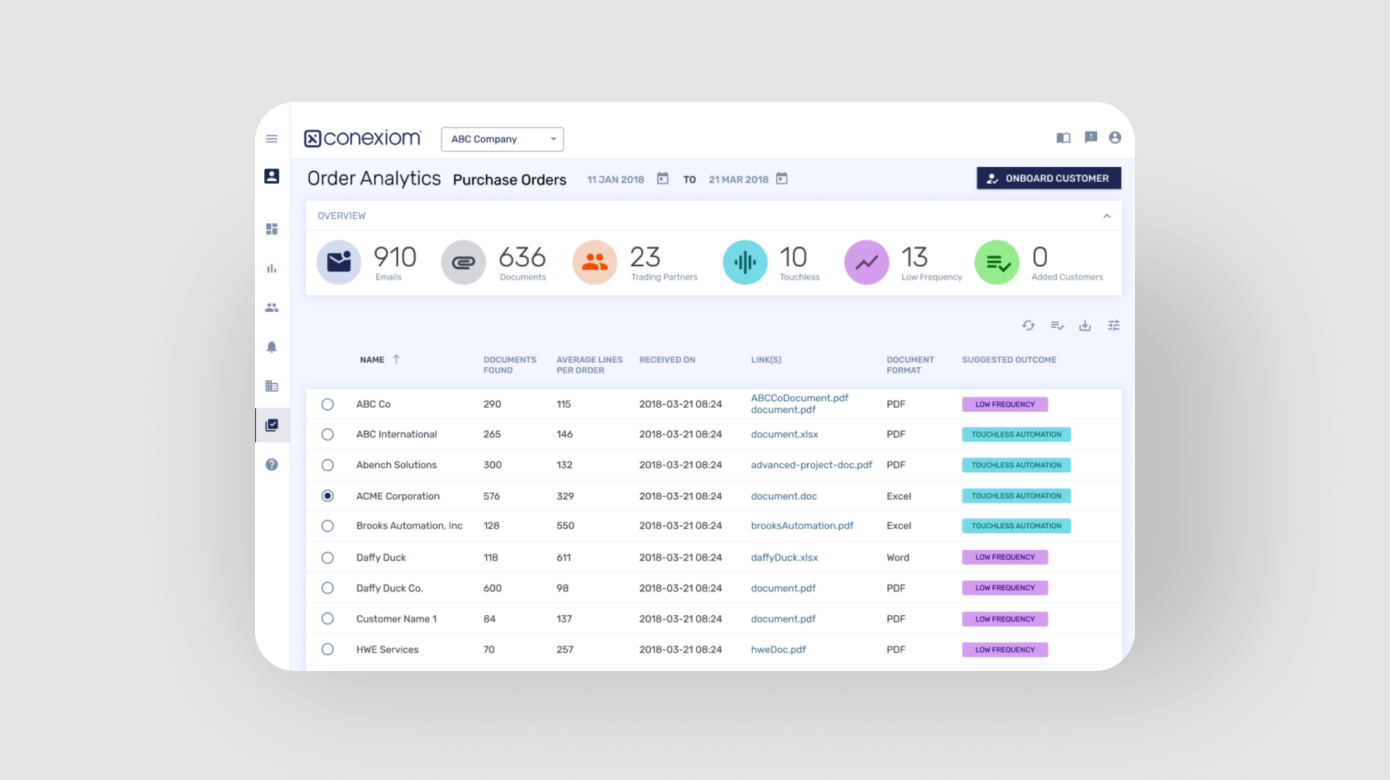
A full digital transformation project focused on modernizing a legacy application. Purpose-built to automate complex, manual documents.
Senior (and sole) UX Designer – responsible for research, UX strategy, visual design, prototyping, and front-end development collaboration.
The modernization of the Partner Portal was successfully approved by the board following extensive research and strategic project planning. Despite tight deadlines, feature parity was achieved between the old application (Partner Portal 4) and the new version (Partner Portal 5) by late 2020.
Post-launch, the application began delivering results almost immediately. Conexiom saw record growth in Q2 2021 (the best quarter in company history). The Conexiom Partner Portal is now a fully modern SaaS platform, built with Material UI and React, and designed with polished, efficient UX workflows.
Conexiom (formerly ecmarket) had been automating manual documents in the distribution and industrial sectors for over 20 years. However, the Partner Portal (built on a 2003 version of ASP.NET), was outdated both visually and technically. The user experience suffered from legacy code limitations and widespread UI inconsistencies, weakening Conexiom’s position during sales demos against competitors with more modern platforms.
The outdated design system constrained the UX, product, and engineering teams. Any new features had to visually align with the old interface to avoid disjointed user experiences, stifling innovation and making iterative improvements difficult.
To establish a user-centered foundation for modernization, I started with deep research and cross-functional collaboration:
These insights shaped the UX strategy and served as the backbone for the new design direction.
The customer journey for automating manual documents was reimagined from scratch. As the only UX designer, I led the full process (from discovery to delivery). Working closely with Product, Marketing, and Engineering, we designed and shipped a completely new Partner Portal that achieved feature parity and unlocked rapid growth.
Built with a component-based system in Material UI and React, the new portal provides a scalable design foundation that supports continuous innovation. The project not only addressed technical debt but positioned the platform for long-term success in the digital transformation space.


